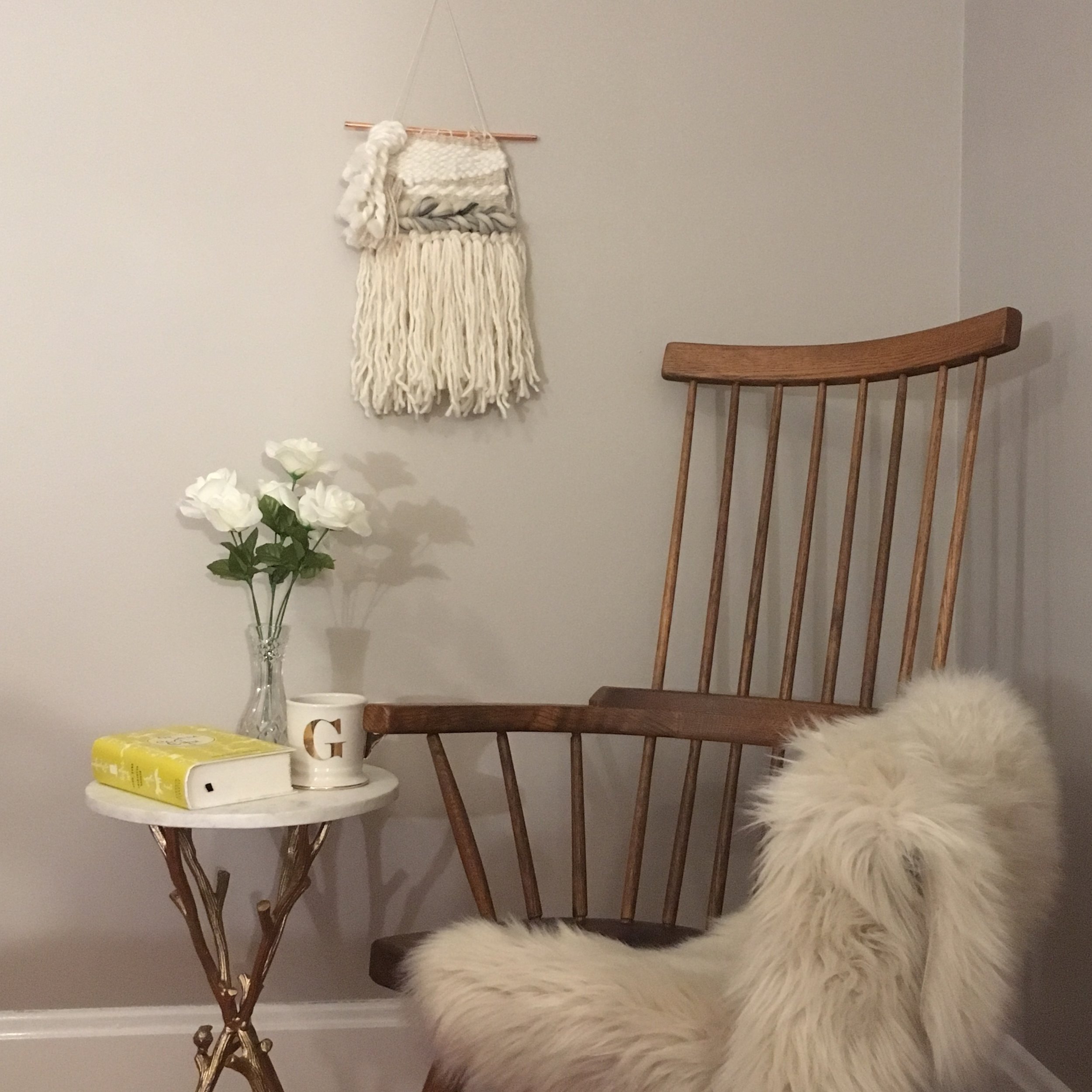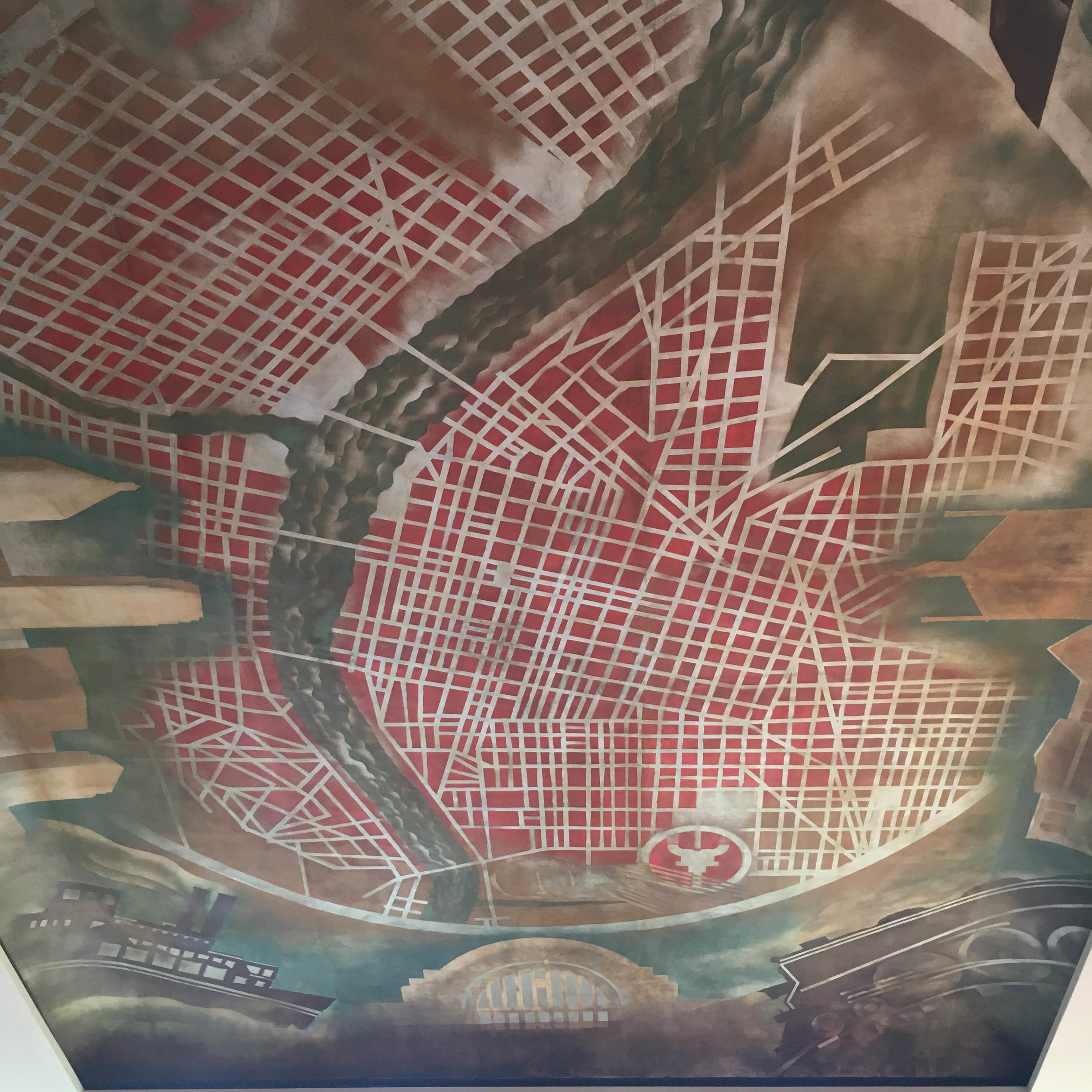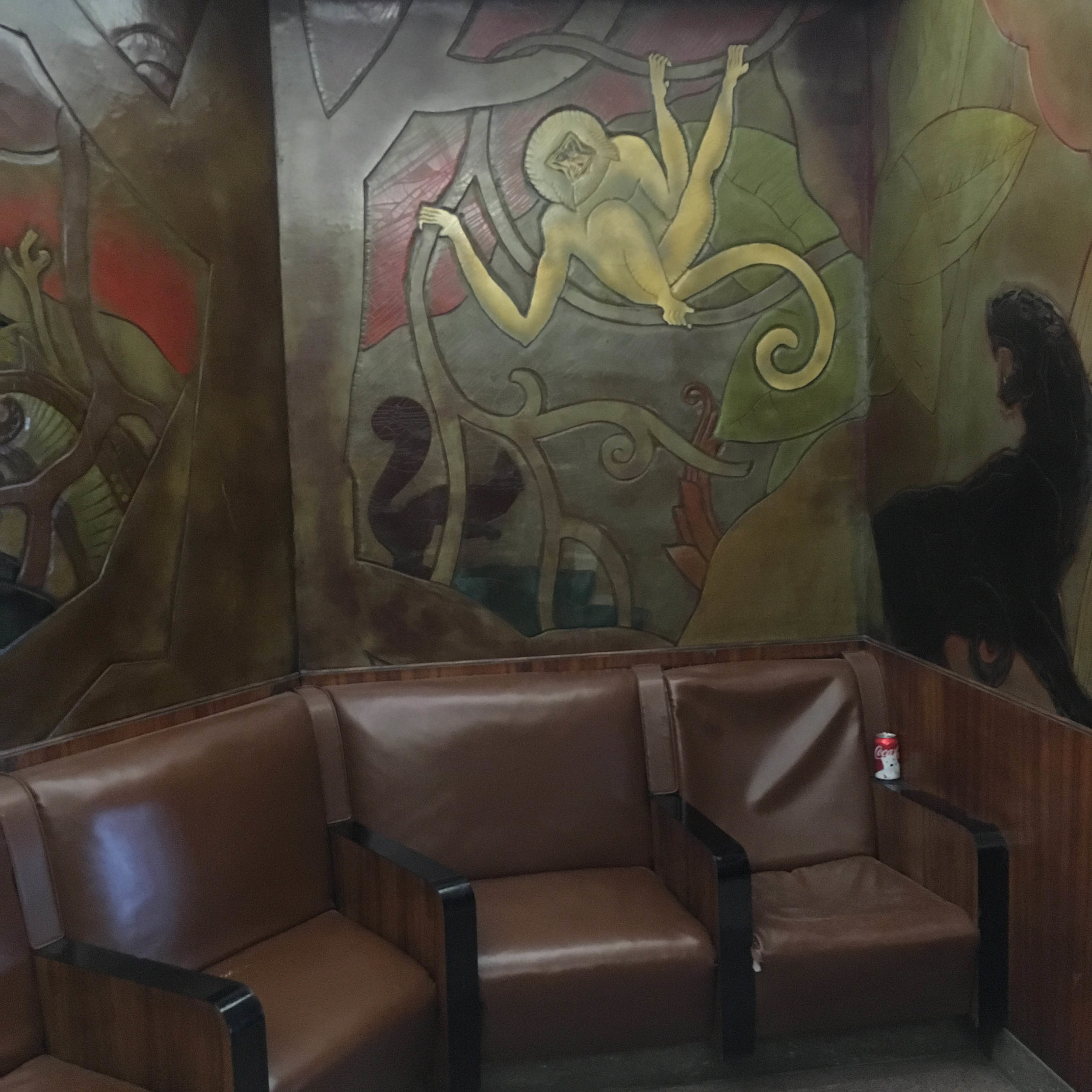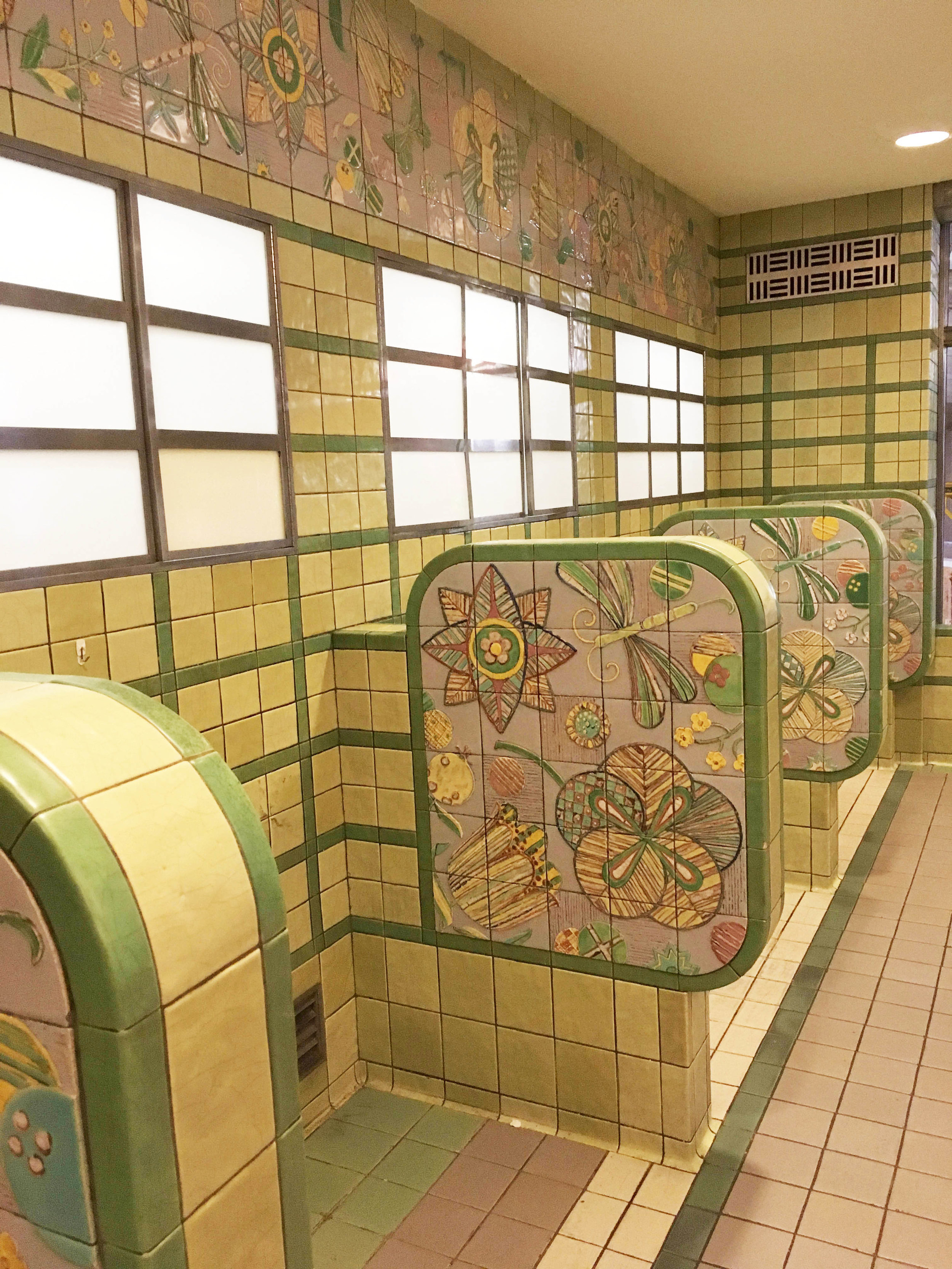Exploring Cincy: Cincinnati Shakespeare Company
Last month, we had the pleasure of joining IIDA CinDay for their Inspire Me Series tour of The Cincinnati Shakespeare Company. Our tour was led by members of the design team from GBBN as well as members of the Cincy Shakes team. Drawing inspiration from and paying homage to historical theatres such as The Globe Theatre, while keeping in mind the needs of today, Cincy Shakes displays a raw but refined attitude toward design and materials.
Last month, we had the pleasure of joining IIDA CinDay for their Inspire Me Series tour of The Cincinnati Shakespeare Company. Our tour was led by members of the design team from GBBN as well as members of the Cincy Shakes team. Drawing inspiration from and paying homage to historical theatres such as The Globe Theatre, while keeping in mind the needs of today, Cincy Shakes displays a raw but refined attitude toward design and materials. The reclaimed barn wood wasn’t added for a “farmhouse feel” but instead draws its inspiration from theatres past, many of which were constructed with found materials and whatever was readily available at the time of construction.
Our favorite design elements within the space were the layers and moments of discovery, when you, as the user, find something when you weren’t expecting to find it. Case in point, an old chandelier used in the new design above the mesh ceiling, or the names of Shakespeare plays in the risers of the main staircase. And let’s not forget about the bathrooms. We definitely judge an overall design based on the design of their bathrooms, and these bathrooms do not disappoint. Keeping scrolling to see some of our favorite photos, and if you haven’t been to Cincy Shakes yet, we highly suggest catching a show there soon!
Exploring Cincy (and The Cov): Workshops at The Frock
I've always been a big fan of weavings and wall hangings. There are so many droll-inducing designs by artisans who are true masters of this historical craft. Unfortunately, I never had the opportunity to take a weaving class while I was in design school, but when I found out Natalie Kaelin was hosting a class at The Frock in Covington, I jumped at the opportunity.
I've always been a big fan of weavings and wall hangings. There are so many droll-inducing designs by artisans who are true masters of this historical craft. Unfortunately, I never had the opportunity to take a weaving class while I was in design school, but when I found out Natalie Kaelin was hosting a class at The Frock in Covington, I jumped at the opportunity. Natalie creates a beautiful collection of home goods, specializing in handwoven textiles, at her Louisville studio, and occasionally teaches these amazing weaving workshops/classes.
The most fun part of the class was seeing what everyone else created in their weavings. We love that each piece was created by hand and has a unique story to tell. These stories allow people to connect to their space and to one another.
Be sure to check out some of Natalie's work on instagram @nataliekaelinhome or www.nataliekaelin.com and keep scrolling to see some progress and final shots of our weaving.
In case you were wondering, that's Harper. She enjoys getting her photo taken.
Exploring Cincy: Transforming Fashion, Iris van Herpen
Write here...Happy 2018 everyone! We continually draw inspiration from the world around us, and there are so many places, spaces, and moments of great inspiration in Cincinnati and beyond. This coming year, instead of keeping those thousands of photos on our phones, we’re going to share them with you, giving you a glimpse of what inspires us and keeps us going, showing off our Queen City and other places, too.
Happy 2018 everyone! We continually draw inspiration from the world around us, and there are so many places, spaces, and moments of great inspiration in Cincinnati and beyond. This coming year, instead of keeping those thousands of photos on our phones, we’re going to share them with you, giving you a glimpse of what inspires us and keeps us going, showing off our Queen City and other places, too.
With that being said, you only have THREE more days (through Sunday) to visit the Cincinnati Art Museum and check out the Iris van Herpen exhibit, Transforming Fashion. Her ability to merge artisanal craftsmanship with unexpected materials, processes (like shaping PET [what soda bottles are made of] with a heat gun and pliers), and technology is truly creative, everything avant-garde was ever intended to define, and downright phenomenal. If you still need convincing, this exhibit rivals McQueen’s “Savage Beauty” exhibit at the Met in 2011. It’s that good. And there’s even samples you can touch. Check out some of my favorite images below and get on over to the Art Museum!
Exploring Cincy: Union Terminal
On January 20th, we had the privilege of joining the IIDA-Cincinnati/Dayton chapter for a hardhat tour of the Art Deco beauty, Cincinnati Union Terminal, while it undergoes a massive $217.5 million ($160 million in construction alone) renovation.
Exterior renovation work at Union Terminal. Soon, the fountains will be taken out to repair the building below (which extends out to the oculi) before they are reconstructed.
On January 20th, we had the privilege of joining the IIDA-Cincinnati/Dayton chapter for a hardhat tour of the Art Deco beauty, Cincinnati Union Terminal, while it undergoes a massive $217.5 million ($160 million in construction alone) renovation.
For those of you not familiar with this Cincy icon, the massive building took 3 1/2 years to complete--from August 1929 to March 1933. The cost? $41 million. In today's world, that equates to a whopping $575-$589 million! The impressive scale of this building along with its attention to details are what makes this such an icon in our city. To learn more about the building, head over to http://www.cincymuseum.org/union-terminal
Check our some of our behind the scenes photos below:
Bottom of the seats in the newsreel theatre, where passengers would come to catch the news while waiting for their trains. Why is the bottom of the seat so interesting? This wire mechanism was used to hold passengers' hats while they waited.
The old lunch room at Union Terminal. The new design and renovation will be based on the original design. Small changes here are all new paint colors and new bulbs in the original fixtures (shown hanging above). Larger changes occur on the walls and floor. Along the left wall, where you see the lovely shade of green and tan, there used to be windows! Those windows will be reconstructed and placed. For the floor, new terrazzo will be installed and it will also outline the shape of the original U-shaped lunch counters.
Deco details. We love the attention to detail and materiality in Art Deco designs. Who knew vent covers could ever look so good?
A map of Cincy.. on the ceiling. Not only was the scale of this fresco impressive, but also the vivid colors. There's always red in Cincy.
This wall was found in a vestibule area outside a restroom. Again, those deco details, making even the simplest of waiting areas a little more exciting.
Union Terminal boasts an impressive amount of original Rookwood tile. Most people know this as the ice cream shop, but it was originally a tea room for the passengers. We love the bright colors and motifs in these tiles.
Rookwood tile detail from the tea room.
Since all the exhibits (about 90% anyway) have been removed for the renovation, it's a lot easier to understand the original functionality of the space. There were three vehicle entrances that dropped off (and subsequently picked up) passengers: the left (shown here) was used by taxi cabs; the middle was used by buses; and the right was used by trolleys. Vehicles would drop off their passengers, who would then walk up the sloped ramp to the main concourse. Vehicles would then proceed along the route, underneath the main concourse and exit on the south side of the building. The museum was previously split up into two large exhibit areas, one on the north side and one on the south side. Since the exhibits have been removed, we were able to walk this path, which greatly helped our understanding of the functionality of the building.
The view into the city from the south entrance of Union Terminal.
A map of the United States in the President's office. Each state was constructed from a wood indigenous to that state.
Another detailed design in the President's office. This design of Union Terminal in wood was truly beautiful.
A detail that speaks to the times. In the board room outside the President's office, these chairs boast a built-in cigarette holder and ash tray that flips and dumps the ashes into a cavity beneath.
Keeper of the keys. This key wall is just outside the President's office. The wall design also adds another layer of design and texture to the space.
We hope you enjoyed our photos of Union Terminal! It's truly an iconic building, not just to Cincinnati but to the larger world of architecture. We highly recommend getting a hard hat tour while it's under renovation and then visiting again once all the work is complete.
Cheers! xx
Exploring Cincy: Art Deco on Dalton Ave
What I like most about cities is their depth. The ability to always find something “new,” even if new means you’ve seen it from the highway 100 times, driven down its road 12 times, and the structure itself has stood for 84 years.
Sandstone and granite walls are accented by decorative bars on the windows.
What I like most about cities is their depth. The ability to always find something “new,” even if new means you’ve seen it from the highway 100 times, driven down its road 12 times, and the structure itself has stood for 84 years.
Last week, while investigating a gaffe with the post office, we were prompted to visit the downtown location. After a quick Google search to find the address, I noticed that the post office had 4.5 stars on Yelp. 4.5 stars on Yelp?!? I thought…How in the world?! I will make the assumption that most of you have visited more than one post office in recent history. If that is the case, I will assume again that you might not give your post office 4 or 5 stars. I was intrigued. Then I saw the photos on yelp. Okay Brittany. We HAVE to go. So we did.
Walking up from the parking lot, I was in awe. Smooth, simple walls made of sandstone and granite accented by decorative bars on the windows; everything about this building is quintessentially Art Deco. A stepped back entry with large bronze doors, a geometric, bronze detail above, and an ornate relief give you a taste of the Deco details inside.
Deco details welcome you into the space.
I walked in, and I swear my jaw dropped. This is a POST OFFICE?! I thought. It was beautiful. A bronze plaque adjacent to the vestibule confirmed its Art Deco roots: “This building was erected under the administration of Herbert Hoover…1932.” It also listed the architect, Samuel Hannaford & Sons.
The vestibule
For you Cincy aficionados, that name should be familiar. Hannaford & Sons designed many prominent structures. Some of the most notable include The Cincinnatian Hotel (1882), City Hall (1893), Music Hall (1896), Emery Theatre (1912), and the Cincinnati Times-Star Building (1933) (SPMH).
On the way to the transaction counter, we found more Deco details. Marble inlay floors, built-in marble counters with task lighting for addressing, floral reliefs on the ceiling; the list goes on. One of my favorite design elements was the bronze, geometric partition between the lobby and transaction counter. The geometries it creates are amazing, and I love the patina it has developed over time.
Geometric screen detail
And I can’t complete this post without discussing the lighting in this building. Holy smokes. The reflections and shadows created from sunlight peering in through the ornate bars on the windows are simply stunning. The pictures attempt to do it justice, but you really need to see it in person.
Next time you’ve got something to mail and have an extra 20 minutes, I highly recommend checking out the Dalton Ave Post Office. It’s a beautiful Cincy gem and did I mention how nice the postal workers there are?!
Cheers x
Allison
Works Cited
The Society for the Preservation of Music Hall (SPMH). Samuel Hannaford. March 2016.












































